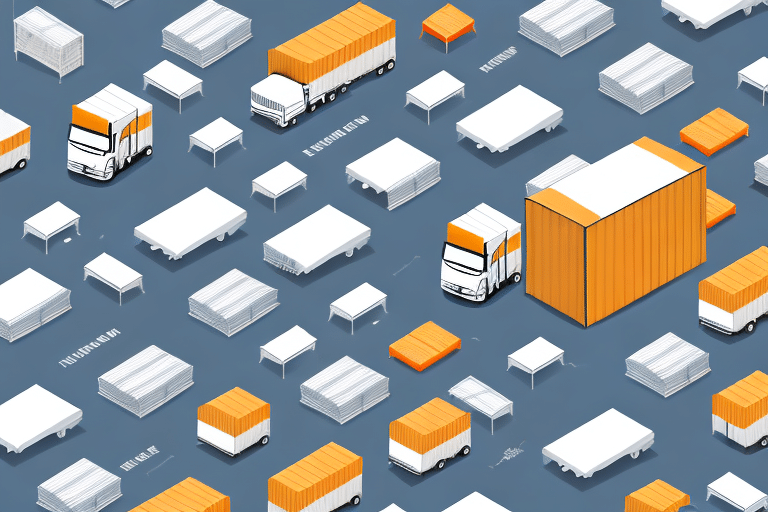Unlocking the Potential of Supply Chain Technology
In today's fast-paced business environment, supply chain management has evolved into a complex endeavor. The necessity to coordinate multiple suppliers, distributors, and retailers while ensuring timely delivery of goods has driven the adoption of various technological solutions. These advancements not only enhance efficiencies but also unlock new potentials within supply chain management. This article delves into how technology is transforming supply chain operations and the strategies companies can employ to leverage these innovations effectively.
Technological Advancements Transforming Supply Chain Management
Automation and Robotics
Automation technologies, including robotics, are revolutionizing supply chain processes by minimizing human error and increasing operational efficiency. Automated warehouses, for instance, can handle large volumes of goods with precision, reducing order processing times by up to 50% (Forbes). Robotics in manufacturing and distribution centers streamline repetitive tasks, allowing human workers to focus on more strategic activities.
Data Analytics and Business Intelligence
Data analytics plays a critical role in optimizing supply chain operations. By analyzing vast amounts of data, companies can forecast demand more accurately, manage inventory levels efficiently, and identify potential bottlenecks. According to a McKinsey report, businesses that leverage advanced analytics are 5 times more likely to make faster decisions than their competitors.
Artificial Intelligence and Machine Learning
Artificial Intelligence (AI) and Machine Learning (ML) are pivotal in enhancing supply chain visibility and decision-making. AI algorithms can predict demand fluctuations, optimize routing for transportation, and automate procurement processes. For example, AI-driven predictive maintenance can foresee equipment failures, reducing downtime by up to 30% (Supply Chain Digital).
Internet of Things (IoT)
The Internet of Things (IoT) integrates connected devices into the supply chain, providing real-time tracking and monitoring of goods. IoT sensors can monitor temperature, humidity, and location, ensuring product quality and enhancing traceability. A study by Gartner projects that by 2025, 75% of large supply chains will implement IoT solutions to enhance operational efficiency.
Enhancing Transparency and Traceability with Blockchain
Blockchain technology offers a decentralized and immutable ledger system, which significantly improves transparency and traceability in supply chains. By recording every transaction and movement of goods, blockchain ensures data integrity and reduces the risk of fraud. For instance, Walmart utilizes blockchain to track produce from farm to store, enhancing food safety and reducing recall times (The Wall Street Journal).
Furthermore, blockchain facilitates secure and efficient supplier verification processes, minimizing delays and administrative costs associated with traditional supply chain financing.
Overcoming Challenges in Adopting Supply Chain Technologies
Cost Considerations
Implementing new technologies can be capital-intensive. Companies must conduct a thorough cost-benefit analysis to determine the long-term advantages of technological investments. While initial costs may be high, the return on investment through increased efficiency and reduced operational expenses often justifies the expenditure.
Cybersecurity and Data Privacy
As supply chains become more digitized, the risk of cyber threats increases. Ensuring robust cybersecurity measures and compliance with data privacy regulations is paramount. According to a IBM Security report, the average cost of a data breach in 2023 was $4.45 million, underscoring the importance of investing in cybersecurity infrastructure.
Integration with Legacy Systems
Many organizations operate using legacy systems that may not be compatible with modern technologies. Integrating new solutions with existing infrastructure requires careful planning and execution to avoid disruptions. Adopting middleware solutions and phased implementation strategies can facilitate smoother transitions.
Skill Gaps and Training
The successful adoption of advanced technologies necessitates a skilled workforce. Companies must invest in training and upskilling their employees to effectively utilize new tools and systems. Partnering with educational institutions and providing continuous learning opportunities can bridge skill gaps and enhance workforce competency.
Future Trends in Supply Chain Technology
Advanced Robotics and Automation
Future advancements in robotics will lead to even more sophisticated automation solutions, capable of handling complex tasks with greater autonomy. Collaborative robots, or cobots, will work alongside human employees, enhancing productivity and safety in warehouses and manufacturing facilities.
Augmented Reality (AR) and Virtual Reality (VR)
AR and VR technologies are set to revolutionize supply chain training and operations. AR can provide real-time information overlay for workers during assembly or inventory management, while VR can offer immersive training environments, reducing training time and improving skill acquisition.
Sustainability and Green Supply Chains
With increasing emphasis on sustainability, supply chain technologies will focus on reducing environmental impact. Innovations such as energy-efficient logistics, sustainable packaging, and carbon footprint tracking will become integral to supply chain strategies. According to the United Nations, sustainable supply chains can significantly contribute to achieving global sustainability goals.
Maximizing Efficiency with Cloud-Based Systems
Cloud-based supply chain management systems offer scalability, flexibility, and real-time data access from anywhere in the world. These platforms facilitate seamless collaboration between suppliers, manufacturers, and retailers, enhancing overall supply chain visibility. A survey by Datamation indicates that 60% of companies adopting cloud-based SCM systems report improved operational efficiency and cost savings.
Additionally, cloud solutions support advanced analytics and AI integrations, enabling more sophisticated decision-making and predictive capabilities.
Integrating IoT Devices for Enhanced Supply Chain Operations
IoT devices such as RFID tags, sensors, and GPS trackers provide critical data points that enhance supply chain operations. By monitoring environmental conditions and tracking asset locations in real-time, IoT integration ensures product integrity and timely deliveries. For example, Maersk employs IoT sensors to monitor the condition of refrigerated containers, ensuring optimal storage conditions for perishable goods (Maersk).
Moreover, IoT-enabled predictive maintenance helps in identifying equipment issues before they escalate, thereby minimizing downtime and maintenance costs.
Embracing Industry 4.0 for a Competitive Edge
Industry 4.0, characterized by the fusion of digital, physical, and biological systems, is reshaping global supply chains. Digital twins, which are virtual replicas of physical assets, enable companies to simulate and optimize supply chain processes before actual implementation. This leads to enhanced efficiency and reduced risks (Forrester).
Furthermore, the integration of cloud computing, IoT, AI, and robotics under the Industry 4.0 framework fosters greater agility and responsiveness in supply chain operations, providing companies with a significant competitive advantage in the market.
Conclusion
Technology holds the key to revolutionizing supply chain management. From automation and data analytics to blockchain and AI, a myriad of tools are available to optimize processes and elevate customer satisfaction. However, the journey to technological adoption is fraught with challenges such as high costs, cybersecurity risks, and the need for skilled personnel. By staying abreast of emerging trends and investing in employee training, companies can harness the full potential of supply chain technologies, ensuring resilience and competitiveness in an ever-evolving business landscape.




















